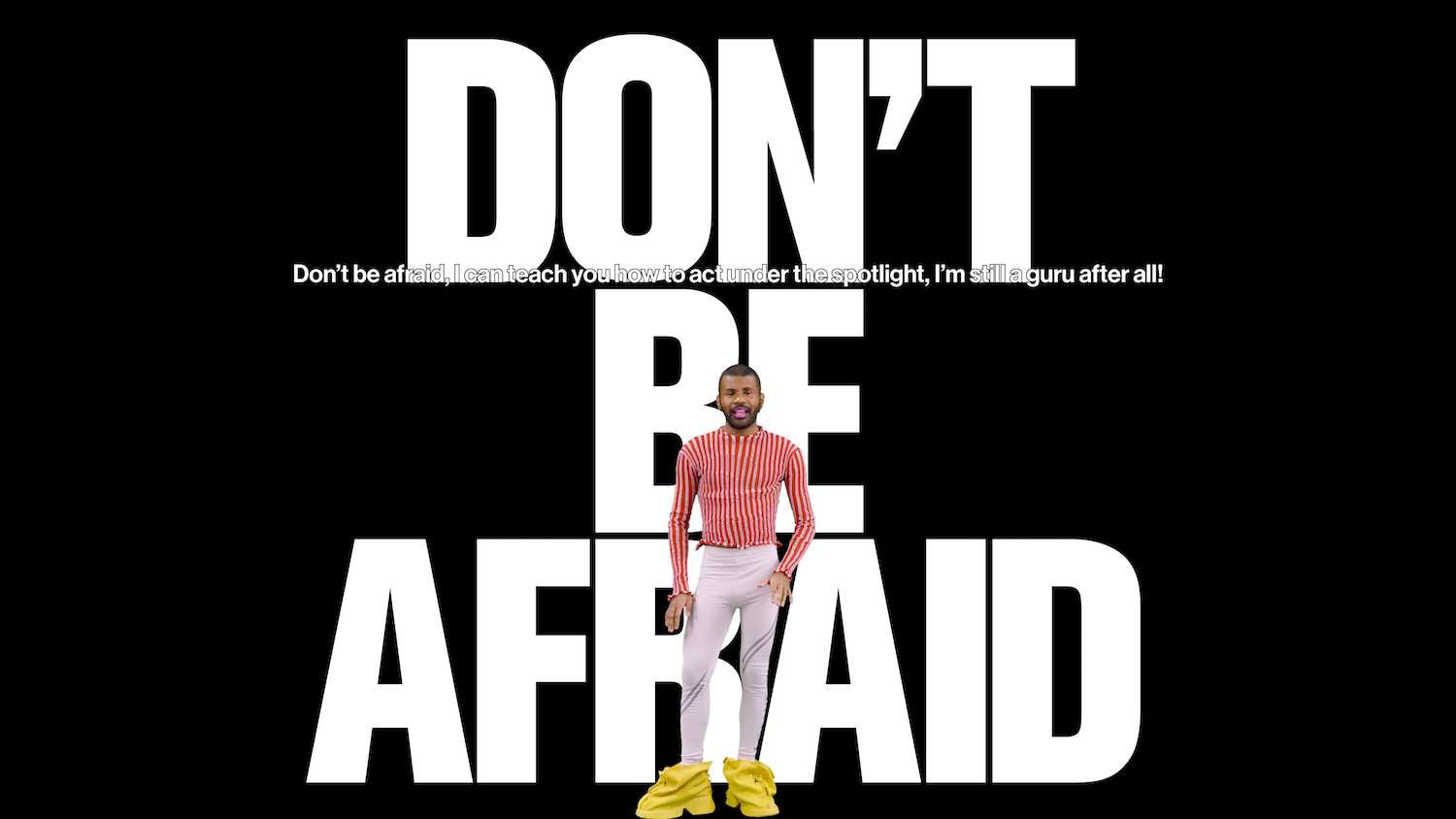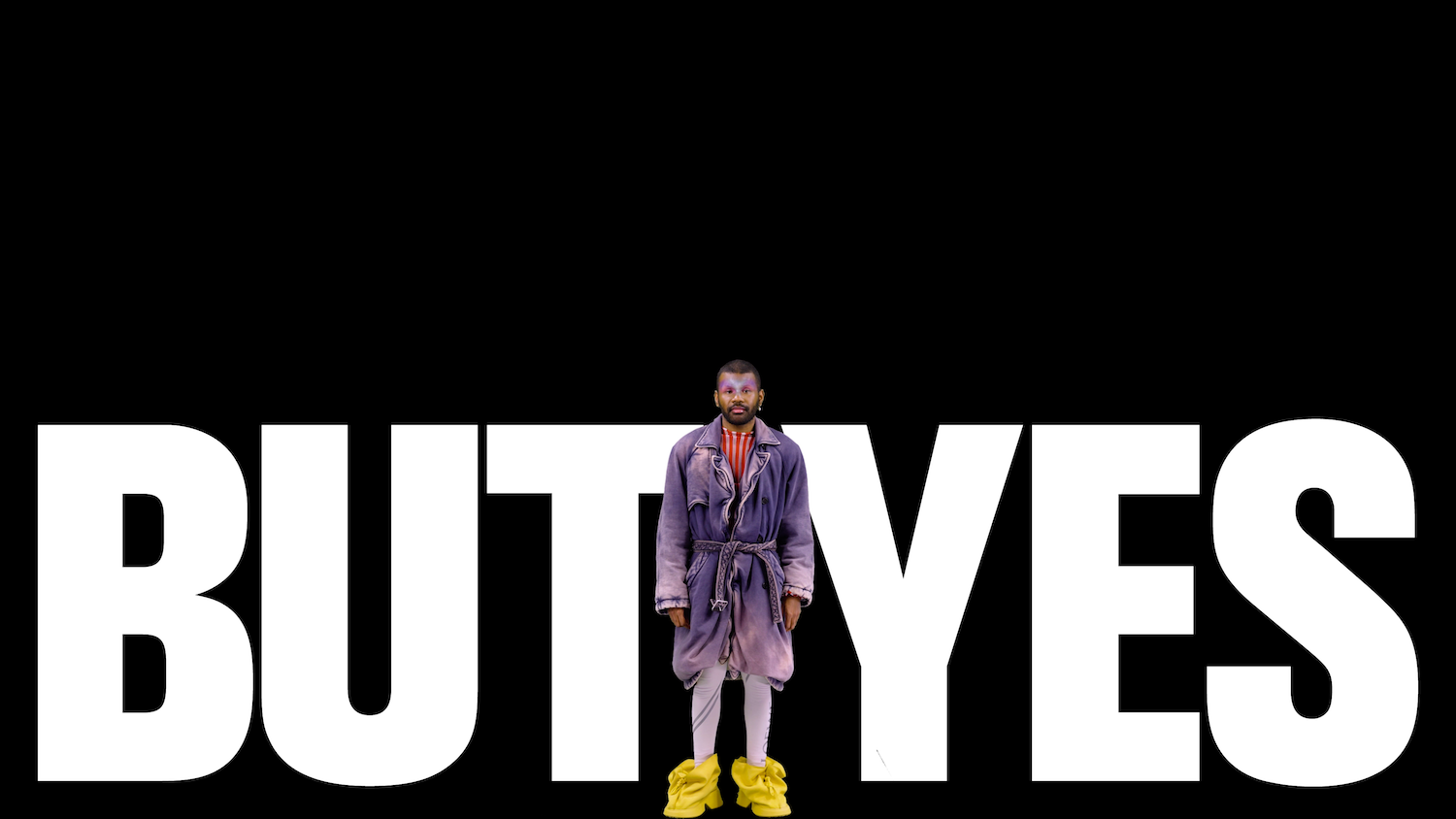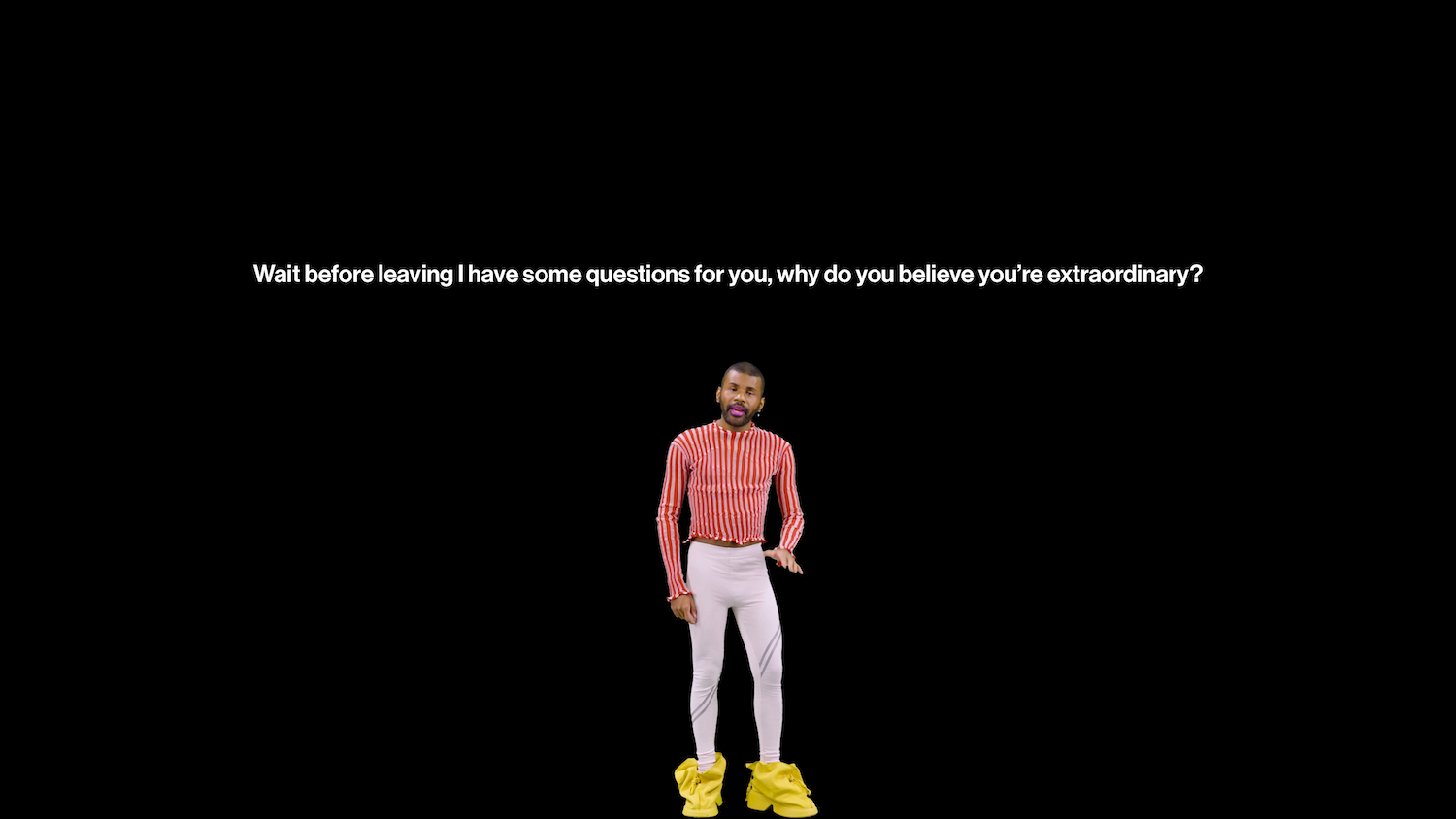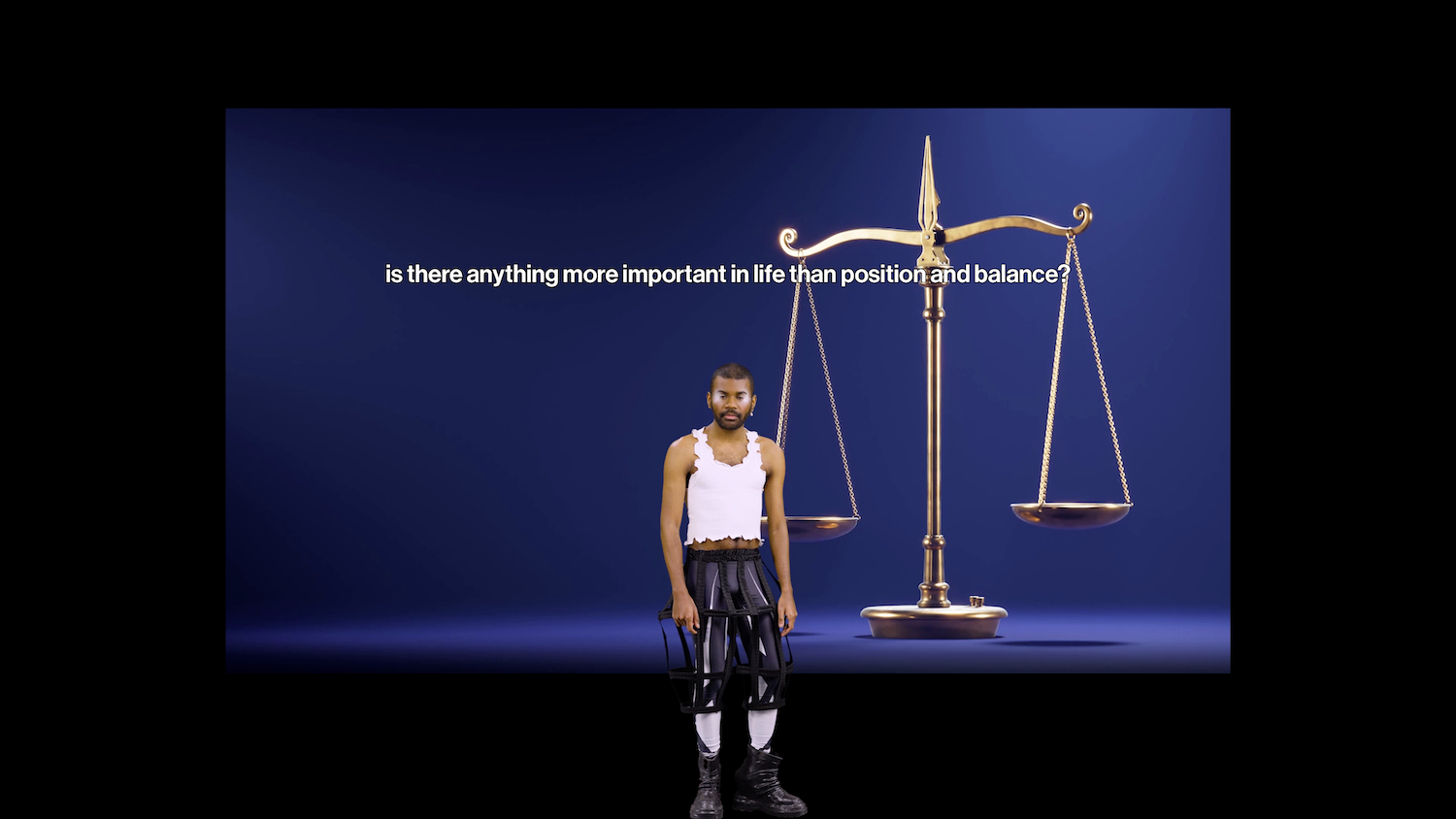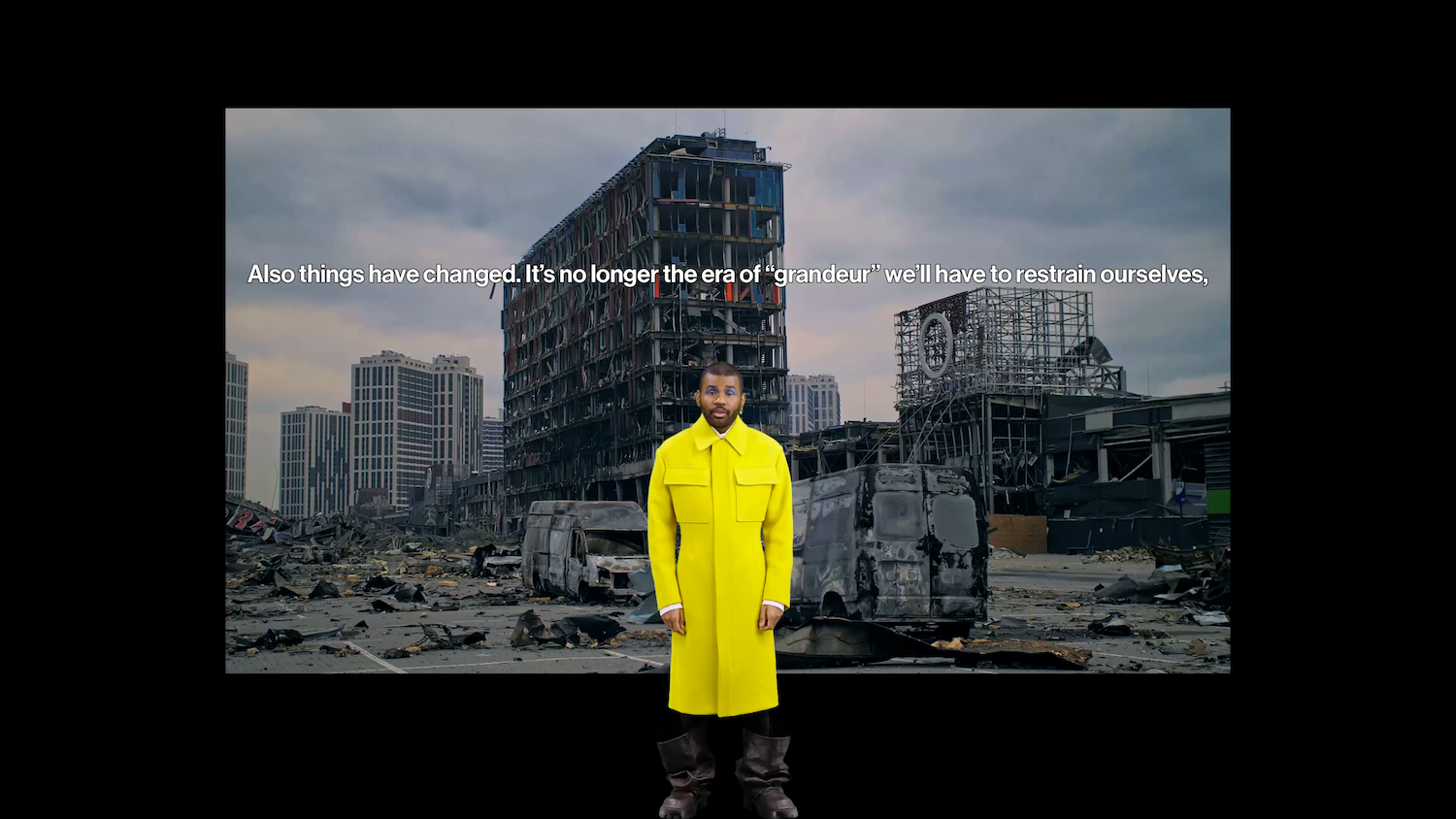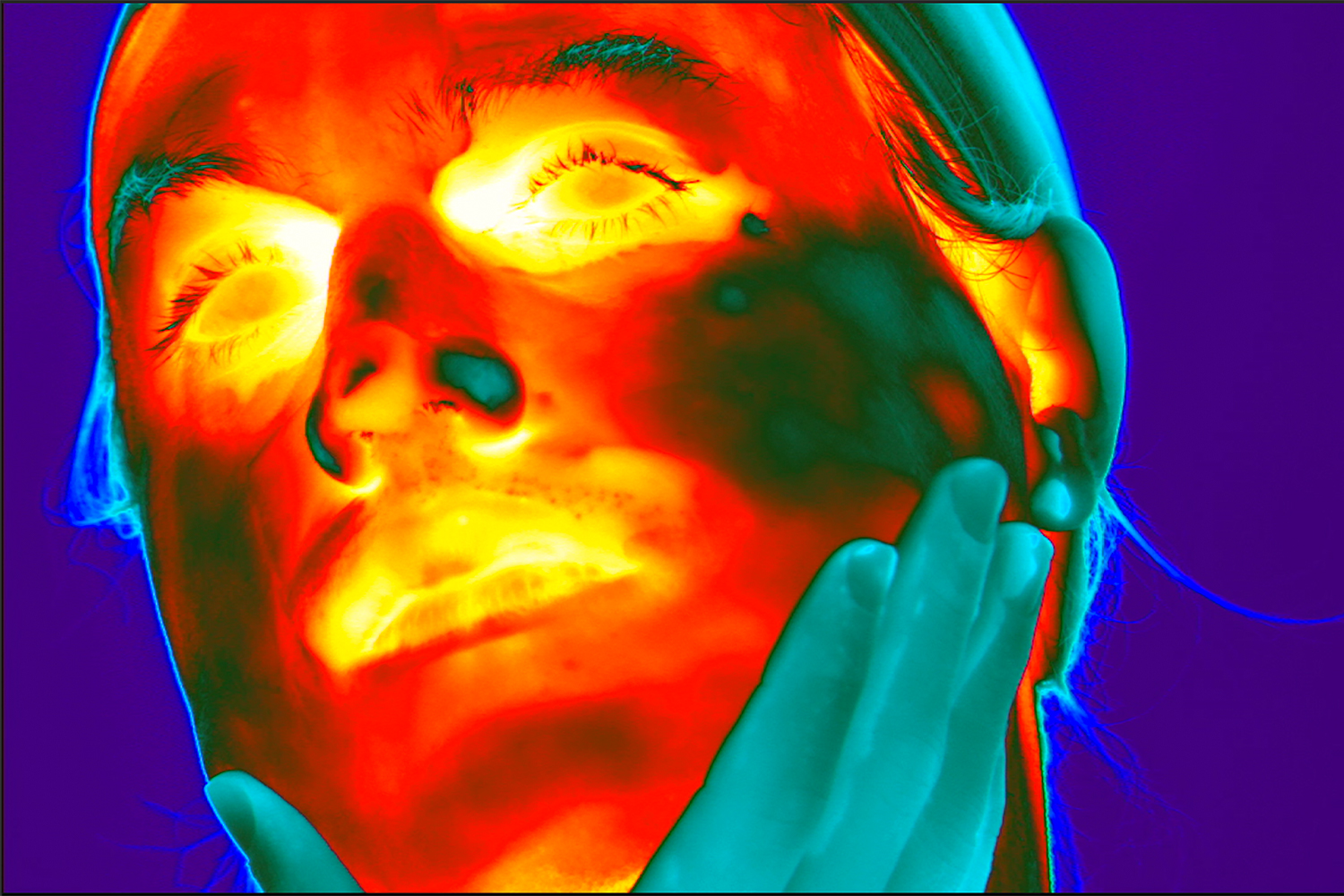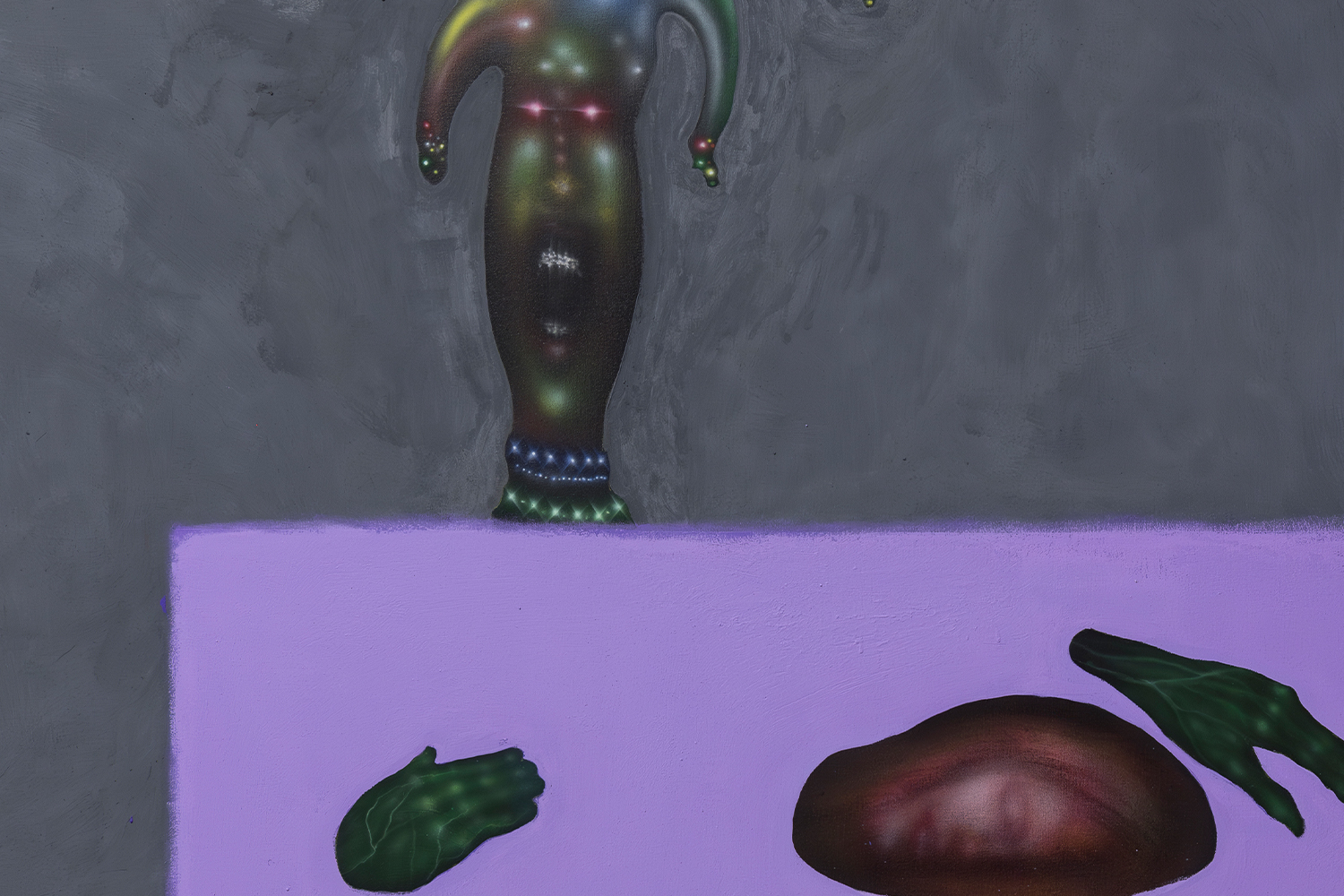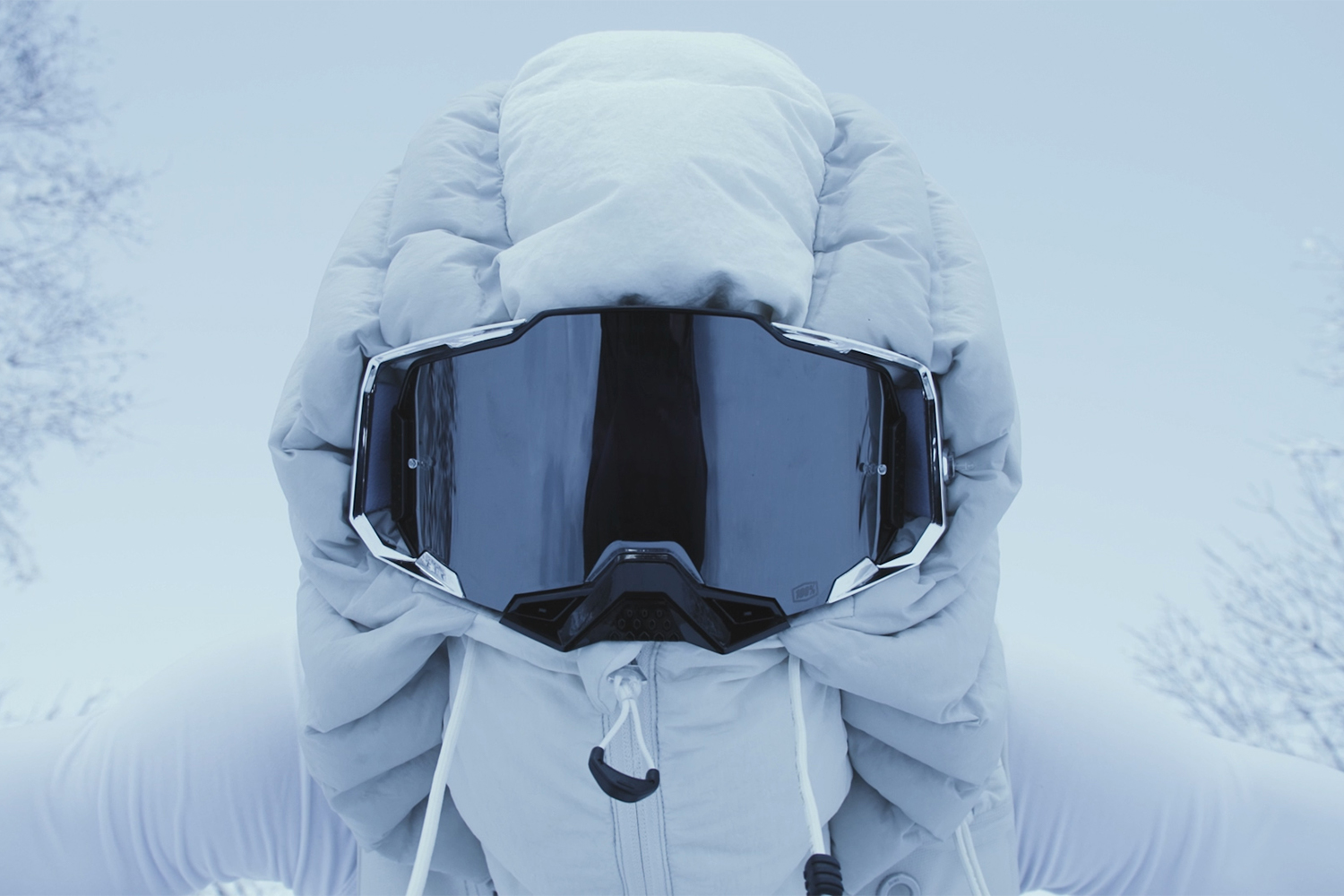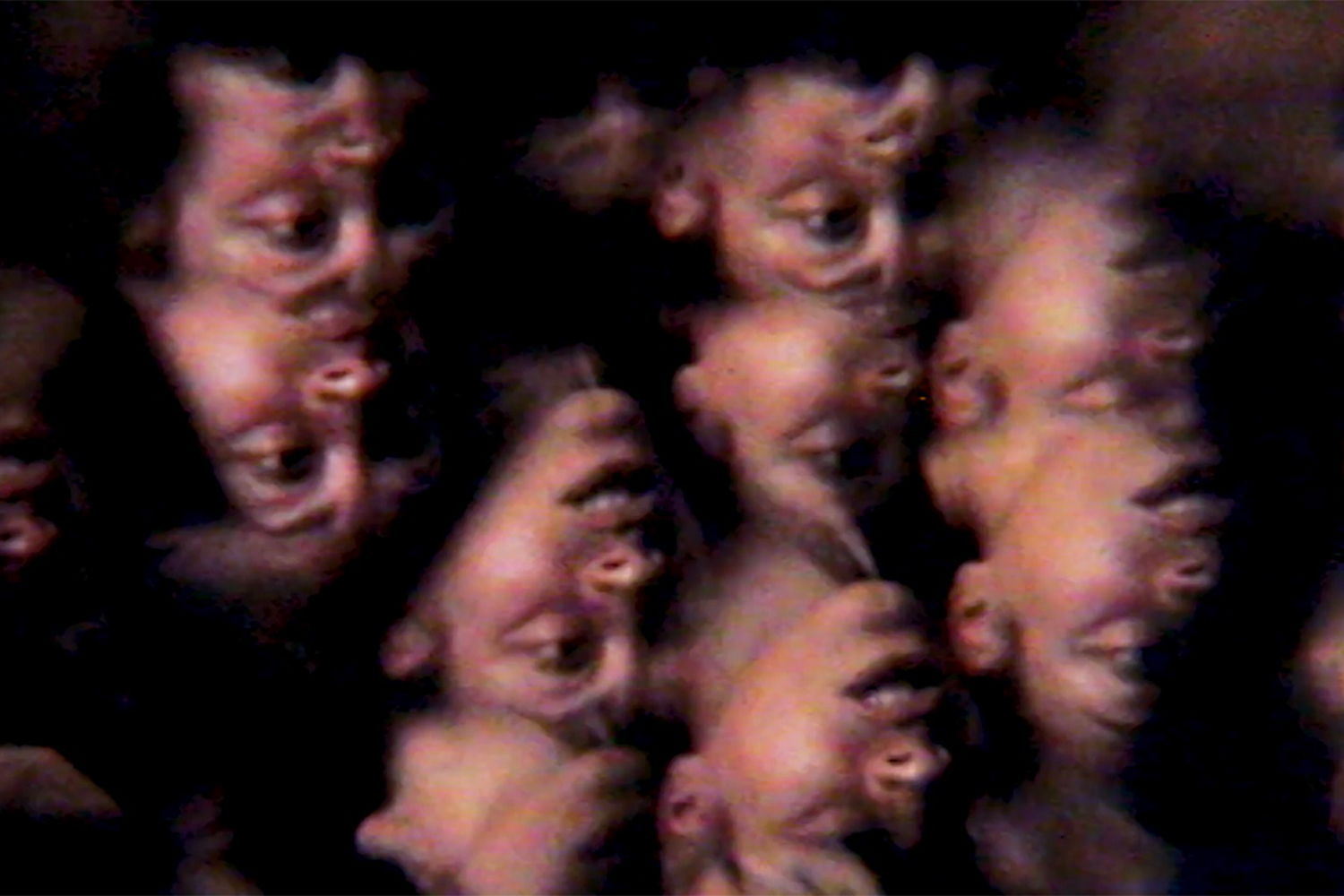“Maybe you are extraordinary, and if you are, leave my temple, it’s a space for average people.” A line from Ndayé Kouagou’s first monumental video installation, The Guru (2023), captures the French artist’s tragicomic tone for his ambitious project for Open Space #11, curated by Claudia Buizza and Ludovic Delalande. Concurrent with the Fondation’s blockbuster Basquiat-Warhol exhibition, Kouagou has appropriated for his latest work a theater-like space inside Frank Gehry’s ballooning complex.
Activating texts he’s been writing since high school, typing almost exclusively in English into the Notes app on his iPhone, Kouagou composes related fragments into longer pieces. His writing, grounded in the disorienting lexicon of our terrifying present, forms the backbone of his practice. Until now, Kouagou has been primarily known for his solo performances. Here, Zimbabwean-Portuguese actress Salber Williams delivers Kouagou’s script in an elegant British accent. Her velvety diction is subtitled and repeated in varying sizes of sans serif that artistic director Axel Pelletanche has styled on a pair of high definition screens that meet in a ninety degree angle.
The screens create a corner, a place of humiliation, entrapment, fear, which Kouagou uses as a metaphor. Directed by his text, at one point The Guru’s high-fashion narrator, performed by the artist, moves into the seam, split in two. Meanwhile, as if translating his script into interior design, four couches, shaped like giant boomerangs, are available for visitors. “I come from performance,” Kouagou explains. “Movement is everything for me. Here, I’m not dancing, but I make people move. I ask questions and they have to answer with their body.”
Pleasure, Kouagou tells me, was a big part of his criteria for selecting the makeup and clothes his narrator wears in The Guru. In addition to his collaboration with a female voice-over actress, the idea is to create a gender-fluid character that is not the artist. “Nobody is going to recognize themself in this person.”
The person everyone will recognize, though, is themself, and Kouagou’s text leans heavily on the second person. While asking “you” all sorts of questions, at a certain point in the video, which runs just over fifteen minutes, stage lights shine on the upholstered boomerang couches, putting the audience and their clothing — decidedly shabby in comparison to that incredible yellow car coat Kouagou’s character wears — into the spotlight. “Looking for an answer is NORMAL BEHAVIOR, but do you even know WHAT THE QUESTION IS?”
On the surrounding walls, round metal signs repeat this question and others, echoing the legibility and publicness of Lawrence Weiner’s NYC manhole covers. The American artist’s staccato phrases in primary colors and all caps certainly do come to mind here. But Kouagou is an autodidact who fled the fashion world for the “total freedom of contemporary art,” and explains he was initially inspired by Hanne Lippard. Discovering her lecture performances on YouTube was an epiphany. “It was just her and the mike and I was like, wait — if her and the microphone is art, is me and a microphone art?”
An unsettling dissonance arises in Kouagou’s The Guru, between the precision of a crisply articulated script and its synchronized subtitles and an odd sort of evaporation of meaning. “I’m limited in English,” the artist explains. “I was always walking around the idea, and I thought that is kind of interesting. I can try to say it in other words or reach for it, moving words in different directions. And that’s what creates this kind of expression that is kind of unclear but very precise.” Listening to Kouagou’s script is like seeing the pieces of a puzzle, the clear shape of individual elements, but not knowing how they fit together or what it would mean if they did. It’s a bit scary, really. “You can feel a fear,” Kouagou tells me. “Fear of what, I don’t know.”
Nonetheless, Kouagou’s work is deliberately generous and accessible; it’s a non-art audience he’s after. For the opening, exactly a week before Jay Z took to the same stage, the artist invited dancer Soa Ratsifandrihana and performer and video maker Harilay Rabenjamina to create a new work. An extraordinary evening, framed by a single moment. In his interview with Buizza, Kouagou expressed just that. “The Guru is about the present, the only thing we all share.”

